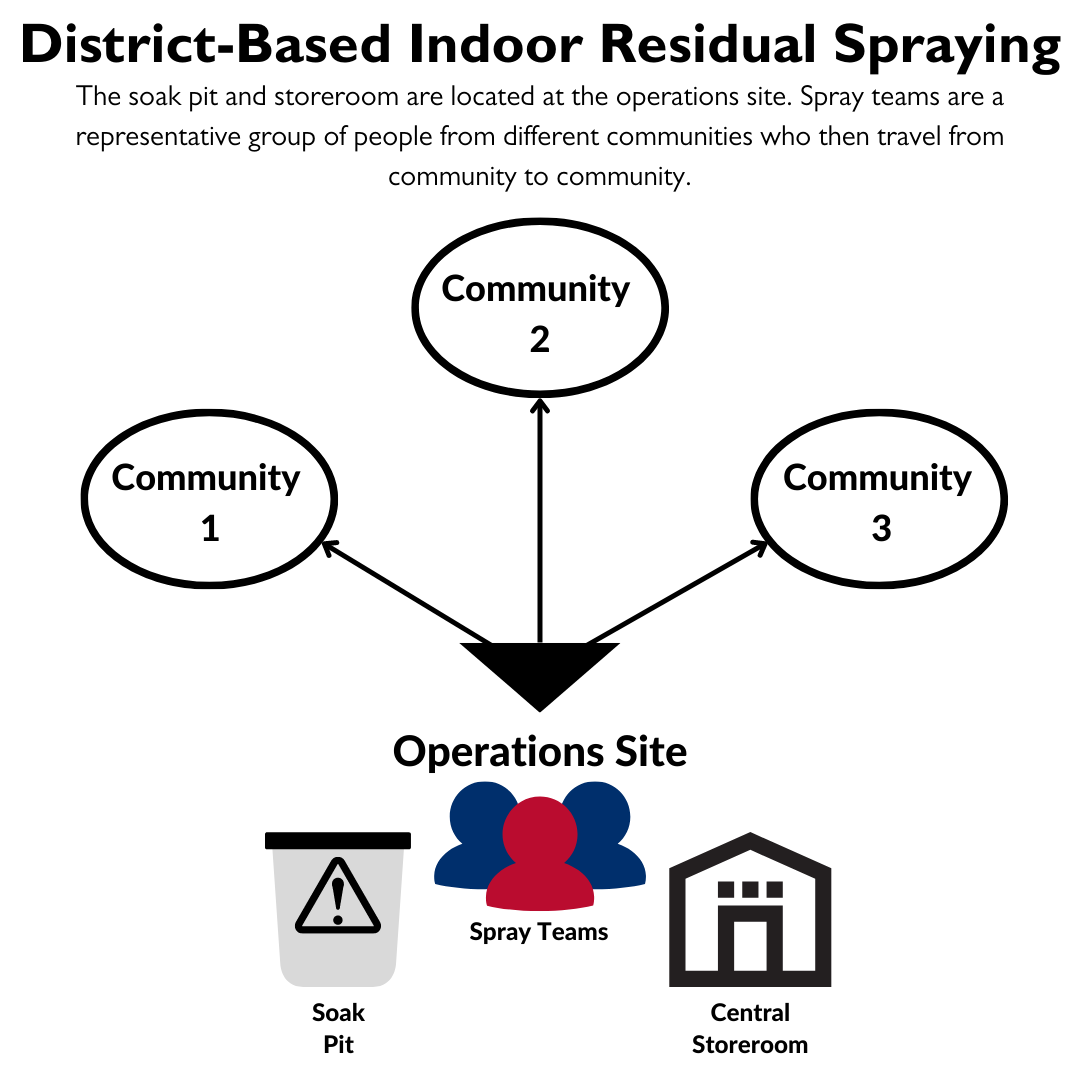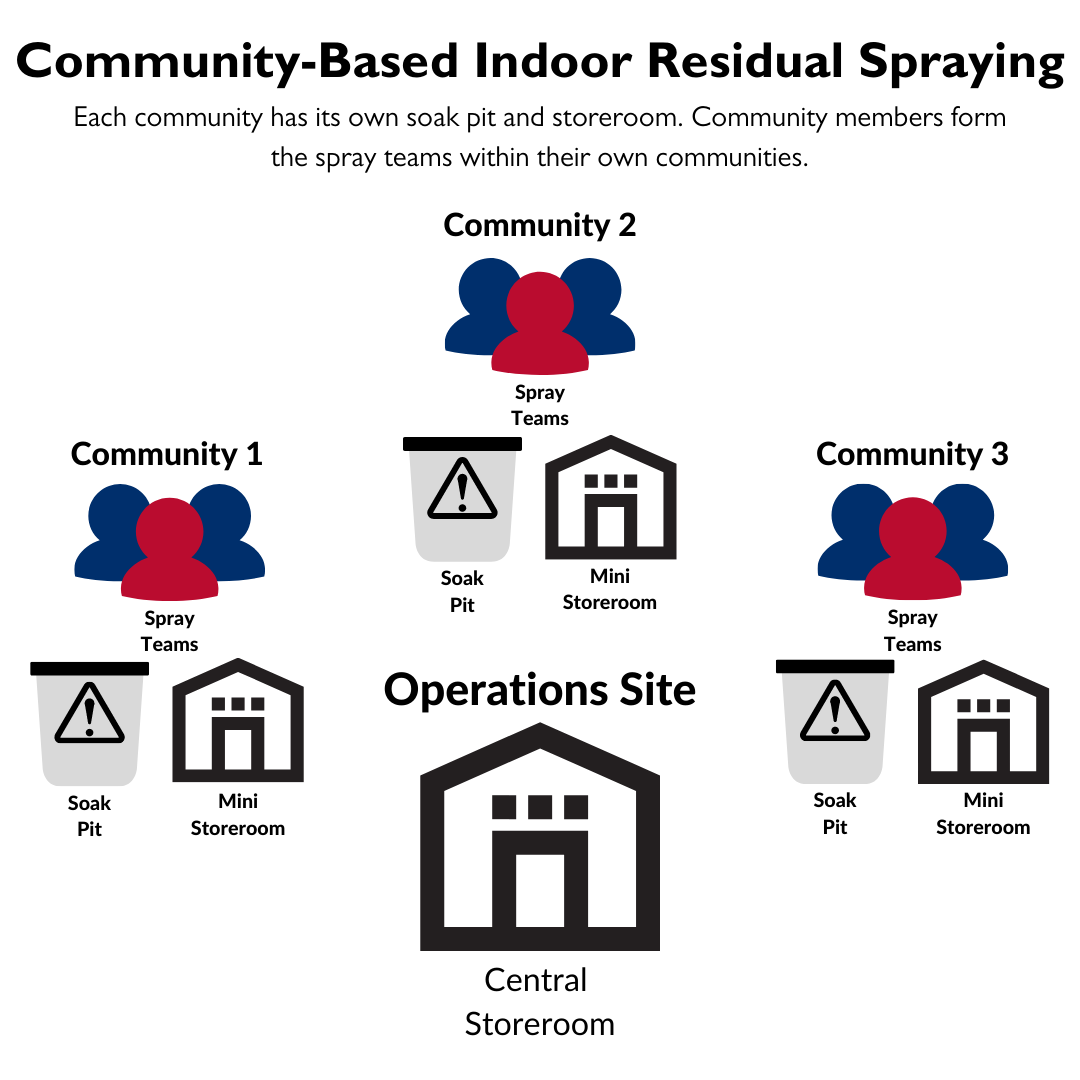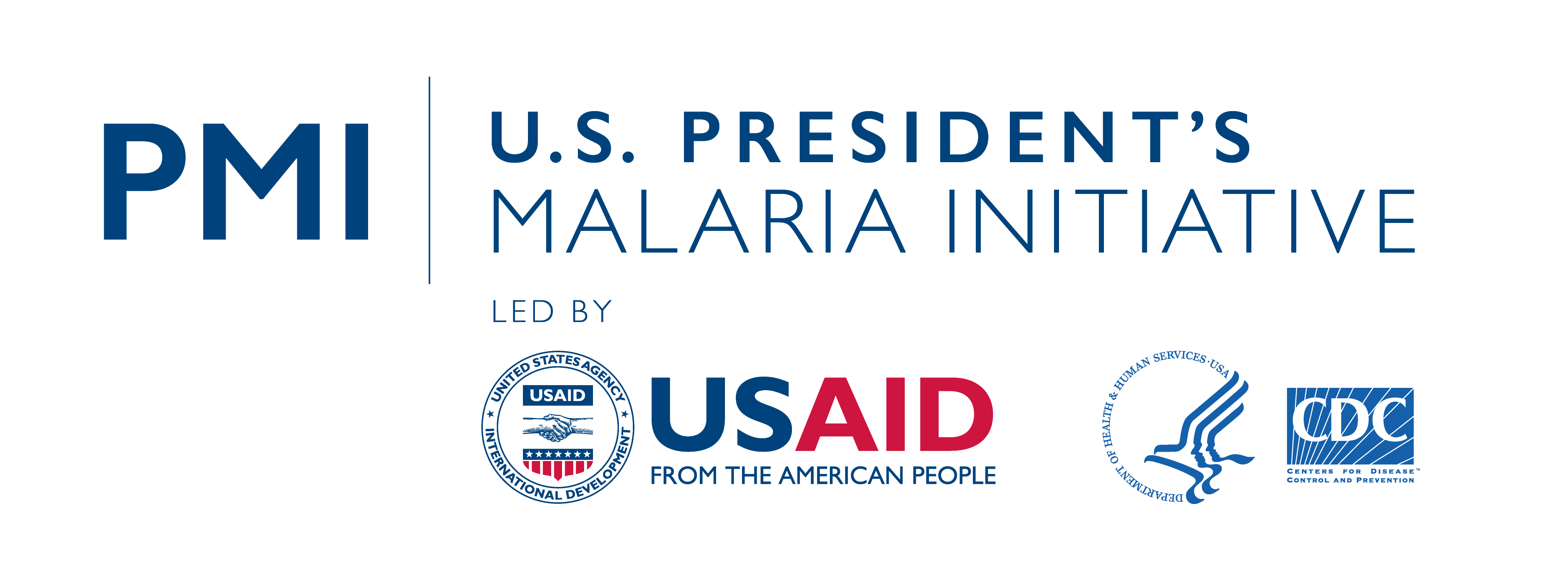Models of Indoor Residual Spraying

Photo Credit: Laura McCarty
The PMI VectorLink project uses a variety of malaria vector control methods to prevent the spread of the disease. One of those methods is indoor residual spraying (IRS); it involves spraying insecticide that’s safe for humans but kills mosquitoes on the walls and ceilings of homes, and sometimes in other structures like schools, hospitals, and prisons. The World Health Organization (WHO) recommends communities should reach a minimum spray coverage—percentage of structures sprayed over the total number of structures—of at least 85 percent to be effective.
PMI VectorLink organizes IRS campaigns using different models depending on unique situations, circumstances, and needs in a target area. This adaptive approach allows the project to reach the most vulnerable populations while maximizing IRS coverage rates and optimizing costs. Various models work differently across activities that include trainings, micro-planning, community mobilization, supervision, environmental compliance, logistics, and financial management. While every campaign and context differ, the project’s three main models for IRS are district-based, community-based, and hybrid.
District-Based Indoor Residual Spraying

The district-based IRS model is a top-down approach led by local governments, community leaders, and the district health management teams with the project’s technical assistance. Campaign planning begins with target area selection, often in areas with relatively high malaria caseloads and baseline entomological data that demonstrates IRS would be effective. Planning then proceeds with subsequent determination of how much insecticide is needed, along with required staffing, supplies, and other resources. District health officials and local administrators provide oversight and frequent support for IRS activities within a health catchment area (populations served by a health facility), depending on staffing skills and availability. The project manages IRS operations from community-to-community from a central IRS operations site. As shown in Figure 1, each operations site has a site supervisor, central commodity storeroom, and soak pit to manage effluent waste. Community members are recruited as a representative group from target communities to serve on spray teams to deliver IRS across communities.
In Ghana, the PMI VectorLink Project has used the district-based model to deliver IRS in nine districts in Northern Region. In Uganda, district-based IRS has worked in up to 10 districts simultaneously and 16 districts in a single year to protect almost 5 million people from malaria.
Community-Based Indoor Residual Spraying

Community-based IRS decentralizes planning, logistics, and supervisory roles to local leaders who receive direct support from the project. Rather than working centrally across target communities from one operations site, community-based IRS models distribute operations within target communities themselves. Target communities often provide storage for IRS commodities free-of-charge within their community, and the project provides spray equipment and insecticides directly to these storerooms. As shown in Figure 2, community leaders will recruit spray teams solely from the community to work in the target areas, and the project constructs temporary soak pits and trains leaders to supervise IRS operations.
The PMI VectorLink Project has used community-based IRS in Ethiopia to expand coverage in as many as 48 districts where a top-down approach would be infeasible. In Mali, community-based models have allowed the project to deliver IRS in areas with active insurgencies, which ensures people living at high risk of malaria do not fail to benefit from effective vector control because of political circumstances.
Hybrid Model of Indoor Residual Spraying
The hybrid model combines aspects of the district-based and community-based IRS models to tailor the intervention to the unique circumstances of a target community. This contextualization expands coverage, reduces costs, and increases the efficacy of the IRS intervention. The hybrid model most often uses district-based IRS operations sites, yet also relies on community-based models in certain areas (e.g., areas with ethnic minorities, island communities, and/or refugee camps). In Malawi and Kenya, the project has used a hybrid model to deliver IRS in island communities with unique transportation and environmental concerns. In Tanzania and Rwanda, the project has used hybrid models to protect people living in refugee camps from increased risk of malaria transmission. In Zimbabwe, hybrid models allowed the project to reach populations living in remote, rural areas often unreached by medical services.
These main models for IRS manifest differently over time, target communities, and activities. As situations change, VectorLink and local stakeholders decide which model works best for a specific area and activity. This adaptive approach maximizes IRS coverage, reduces costs, and expands protection – delivering results to the greatest number of people while prioritizing those living at the greatest malaria risk.

